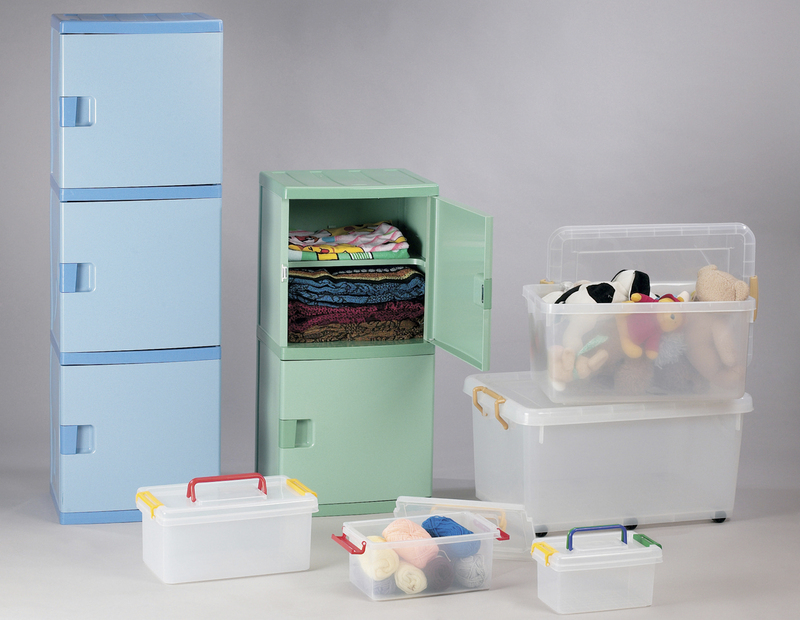Safeguard Your Sofa: Tips from Experts for Extended Storage
Posted on 25/06/2025
When you invest in a quality sofa, safeguarding it becomes crucial -- especially if you're planning on extended storage. Without proper care, your sofa could emerge from storage faded, torn, or ravaged by mold and pests. Fortunately, protecting your couch during long-term storage is simple when you know the right steps. In this comprehensive guide, you'll discover a host of expert tips to safeguard your sofa and keep it in pristine condition, ready for use whenever you need it.
Why Sofa Protection Is Important During Long-Term Storage
Your sofa is more than just a piece of furniture -- it's a gathering spot for family and friends, a place for comfort, and often a significant investment. However, when left unprotected for months or years, sofas can suffer from:
- Moisture damage that leads to mold, mildew, and warping.
- Fading due to sunlight exposure or chemical reactions.
- Pest infestations from rodents and insects.
- Structural damage from improper handling or stacking.
- Dust and grime accumulation that's tough to clean.
Understanding these risks underscores why following proper sofa storage tips is essential for preservation.

Preparing Your Sofa for Storage: A Step-By-Step Guide
1. Deep Clean Your Sofa
Never store a dirty sofa! Food crumbs, dust, and stains can attract pests and create unpleasant odors over time. Here's how to clean your sofa effectively:
- Remove and wash covers (if removable and washable).
- Use a vacuum cleaner with an upholstery attachment for thorough dust and debris removal.
- Spot-treat stains using manufacturer-approved cleaners.
- Let the sofa dry completely to avoid trapping moisture.
If your sofa is leather, use a leather conditioner to prevent cracking during storage. For fabric sofas, consider professional cleaning for best results.
2. Disassemble When Possible
Can your sofa be partially taken apart? Many modern sofas feature removable legs, arms, or even cushions. Disassembling offers several advantages:
- Easier transport and reduced risk of frame damage.
- Better protection for protruding parts.
- Maximized storage space.
Just be sure to keep all bolts, screws, and hardware in a labelled bag secured to the main frame.
3. Protect Against Moisture
Moisture is one of the biggest enemies of upholstered furniture during long-term couch storage. To avoid warping, mildew, and mold, try:
- Adding silica gel packets or moisture absorbers around and under the sofa.
- Raising your sofa off the floor using pallets or blocks to prevent water damage (especially in garages and basements).
- Selecting a climate-controlled storage unit that keeps humidity at bay.
4. Choose the Right Storage Materials
Wrapping your sofa in the right materials is critical for optimal protection. Here's what the sofa storage experts suggest:
- Furniture blankets: These thick, padded blankets act as the first line of defense against dust, scratches, and dings.
- Shrink wrap or plastic sheeting: While tempting for total coverage, never wrap a sofa directly in plastic. This can trap moisture and lead to mold. If you use shrink wrap, first layer with a breathable fabric (cotton sheet or furniture pad).
- Corner protectors: Plastic or foam corner covers help avoid damage during moves.
- Dust covers: Lightweight covers add extra protection against airborne grime.
Selecting the Best Storage Location for Your Sofa
1. Consider Climate Control for Extended Storage
One of the most important sofa storage tips is to select a climate-controlled storage unit. Fluctuations in temperature and humidity can wreak havoc on both wooden and upholstered furniture. Key benefits include:
- Protection against mold, mildew, and wood warping.
- Reduced risk of fabric fading or musty odors.
- Consistent environment ideal for extended storage periods.
2. At-Home Storage: Garage or Basement Tips
If professional storage isn't an option, you can still follow best practices for at-home couch storage:
- Store the sofa away from exterior walls where moisture can seep in.
- Raise it on pallets and don't stack heavy items on top.
- Keep it in a location with ventilation and limited sunlight.
- Periodically check for signs of rodents or insects.
How to Position Your Sofa for Maximum Longevity
Proper positioning is among the top expert tips for sofa storage. Here's what specialists recommend:
- Store upright whenever possible to maintain frame integrity.
- Leave space between the sofa and walls or other items to allow air circulation.
- Avoid stacking heavy items on sofas or cushions.
- Stack cushions (if removed) vertically to prevent flattening.
Is it Safe to Store a Sofa on Its End?
Generally, it's best to keep your sofa in its natural position. However, if you must store it on-end for space reasons, be sure to:
- Cushion the frame with padding or blankets.
- Support the weight evenly to avoid bending or frame distortion.
- Never stack additional furniture on top.
Pest and Rodent Prevention for Long-Term Sofa Storage
Vermin and insects are notorious for seeking refuge in stored furniture. To protect your sofa in storage:
- Clean under cushions and in crevices before storage.
- Use natural repellents such as cedar blocks, lavender sachets, or peppermint oil near (but not directly on) the sofa.
- Inspect your storage unit or garage for access holes or cracks, and seal them well.
- Regularly check your storage area for droppings or nests.
Important: Never use chemical pest repellents directly on fabric or leather, as they can stain or degrade the material.
Proactive Maintenance During Storage
Even in the best environment, long-term storage requires occasional attention. Here are expert-backed maintenance strategies:
1. Schedule Regular Inspections
- Check at least every 2 - 3 months for moisture buildup, pests, or odors.
- Ventilate the storage area if safe to do so.
- Reposition or gently fluff cushions for even wear.
2. Refresh Sofa Covers and Protectors
If using blankets, pads, or sheets, wash or replace them every few months to avoid mustiness and dust buildup.
Special Considerations by Sofa Material
Upholstered and Fabric Sofas
- Use breathable covers; avoid direct plastic wrapping.
- Store in dry, dark spaces to avoid fading and moisture issues.
- Spot treat any stains before storing, as they can set over time.
Leather Sofas
- Condition with a leather-safe product to retain suppleness.
- Cover with soft, lint-free fabric or blankets.
- Keep away from direct sunlight and heat sources.
Sectionals and Modular Sofas
- Disassemble into individual pieces for easier storage.
- Protect connecting hardware in labeled bags.
- Use additional padding between stacked sections.
Common Mistakes to Avoid When Storing Sofas
- Skipping cleaning before storage -- leads to permanent stains and odors.
- Wrapping in plastic directly — traps moisture, causing mold and mildew.
- Storing in damp or unventilated spaces -- risk of mildew and wood warping.
- Stacking heavy items on top -- damages frame and cushions.
- Forgetting to inspect or refresh protection -- allows for pest or moisture issues to linger.
How to Prepare a Sofa for Reuse After Long-Term Storage
- Remove all covers and allow the sofa to air out for several hours.
- Re-clean cushions and surfaces to eliminate dust, odors, or mold spores.
- For musty smells, sprinkle baking soda on fabric, let sit, then vacuum thoroughly.
- Inspect for structural issues or pest trails before bringing indoors.
- Recondition leather with appropriate care products, if applicable.

Professional Sofa Storage Solutions
If you lack space or want peace of mind, consider professional furniture storage services. These often provide:
- Climate control for optimal preservation.
- Additional packing and moving help from trained handlers.
- Regular monitoring to prevent issues before they worsen.
- Insurance options in case of unforeseen problems.
Be sure to choose a provider with good reviews and a reputation for caring for upholstered and leather furniture.
Summary: Best Practices to Safeguard Your Sofa for Extended Storage
- Deep-clean and let your sofa dry thoroughly before storage.
- Disassemble and protect all parts with breathable coverings and padding.
- Choose climate-controlled storage whenever possible.
- Keep your sofa elevated and away from moisture sources.
- Regularly inspect and maintain the storage area and furniture.
- Avoid direct plastic wraps and heavy stacking.
By applying these expert sofa storage tips, you'll keep your couch fresh, clean, and comfortable -- ready for family movie nights or guests, no matter how long it's been in storage. Remember: Proper protection today means less hassle and expense tomorrow!



